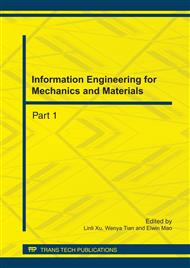p.440
p.444
p.448
p.452
p.457
p.464
p.471
p.475
p.480
The Influences of Aging on the Two Relaxation Peaks in the Air-Cooled Fe71Al29 Alloy
Abstract:
Binary Fe-Al alloy ingots with 29 at. %Al were prepared with commercially pure Fe and Al in a vacuum induction furnace. The specimens used in the internal friction measurement were cut using an electric sparkle machine from the ingots into a dimension 68×1.7×0.9 mm3. The heat treatment was performed in such regimes as heating temperature 900°C and holding time 1 hour in an argon atmosphere followed by furnace cooling or air cooling. The air-cooled samples were then aged at 350°C for different time to achieve the different degree of disorder. The internal fiction-temperature spectra of the air-cooled Fe71Al29 alloy were measured during both heating and cooling using a computer-controlled automatic inverted torsion pendulum through free-decay and forced vibration methods. It has been found that three internal friction peaks appear during heating at 180°C termed as P1, 340°C termed as P2 and 510°C termed as P3 in air-cooled specimens, respectively. P1 and P2 peaks disappear and P3 is retained during cooling. XRD results show that the air-cooled Fe71Al29 alloy is disordered and the furnace-cooled specimen possesses ordered structures. The air-cooled specimen presents similar diffraction peaks to the furnace-cooled specimen after it is heated to 650°C and then in-situ cooled to room temperature. Ageing has great influence on the P1 and P2 peaks for the air-cooled Fe71Al29 alloy. The height of P1 and P2 peaks is decreased with increasing aging time, which is due to the reduction in the disorder degree of the air-cooled specimen.
Info:
Periodical:
Pages:
457-463
Citation:
Online since:
July 2011
Authors:
Keywords:
Price:
Сopyright:
© 2011 Trans Tech Publications Ltd. All Rights Reserved
Share:
Citation:


